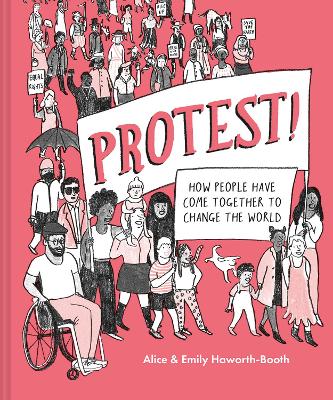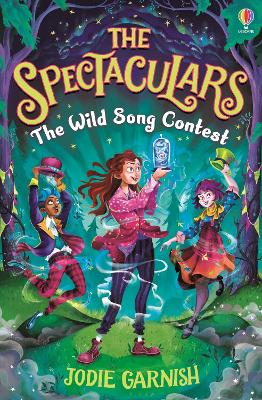Protest!

By Author / Illustrator
Alice Haworth-Booth, Emily Haworth-Booth
Genre
Representation & Inclusion
Publisher
Pavilion Books
ISBN
9781843654582
Format
Hardback
Published
10-06-2021
Synopsis
Illustrated by award-winner Emily Haworth-Booth, and written by Emily and her sister Alice, this book is a timely history of peaceful protests from around the world - from 1170 BCE to the present day.
Protest has changed the planet - from Roman times to today, ordinary people have stood up for what they believe in and made the world a better place. Children are more likely now than ever before to make a peaceful stand against what they believe is wrong in the world. The time is right for a book that sets out the history of protest and how it has changed our society.
This book covers the global history of protest from 1170 BCE, when workers on the pyramids in Egypt went on strike for more food, to the present day, with the school strikes for climate. From the women's march in Rome, through the peasants' revolt, the abolitionist movement and the suffragette movement right through to Extinction Rebellion and Black Lives Matter.
Also included are the Native American Ghost Dance, the Abolitionist Movement, Women's Suffrage Movement, anti-nuclear movement, the Stonewall riots, the fall of the Berlin Wall, the Arab Spring, Hong Kong umbrella protests and much more. The book covers civil rights, women's rights, LGBTQI+ rights, anti-apartheid, environmental campaigns and more.
It also looks at creative ways of protesting - theatrical interventions, singing protests, guerrilla gardening, tree-sitting, noisy protests and surreal happenings.
Reviews
Jane
I like the colour scheme: shades of fluorescent orange and monotone. I like the bold design: the use of placards for headings, the inclusion of a Contents page, Introduction, Note to Reader, and concluding Thanks. I like the humour, evident in the choice of examples covered and in the illustrations and speech bubbles. I like that the descriptions in each chapter are short (maybe only a couple of pages on each event/movement) and that 3 or 4 are chosen to highlight the particular theme, with a final double page spread about the tactics used.
The 12 chapters include examples as varied as the plebeians desertion of Ancient Rome and the toy protests of Europe in the 2010s. Mostly, the story of protest is told chronologically, which is helpful in building a picture of its development, with less emphasis on famous activists like King and Gandhi and more on 'ordinary folk'. It is hoped they will all inspire young people who want to take non-violent action for a better world. The authors are careful not to romanticise their subject, pointing out that not every protest ends successfully or safely, and offering some advice on reducing risks. A quote from Malala Yousafzai is a very fitting end to the book.
Highly recommended for KS2 children, perhaps for reading aloud in library times, or using in discussions on climate change, global development, inspirational leaders or (British) values and human rights. It could also be used in a study of book illustration or when exploring the features of non-fiction texts.
168 pages / Reviewed by Jane Rew, school librarian
Suggested Reading Age 9+
 The Spectaculars: The Wild Song Contest
The Spectaculars: The Wild Song Contest
 Dress-up Jobs: Hats
Dress-up Jobs: Hats
